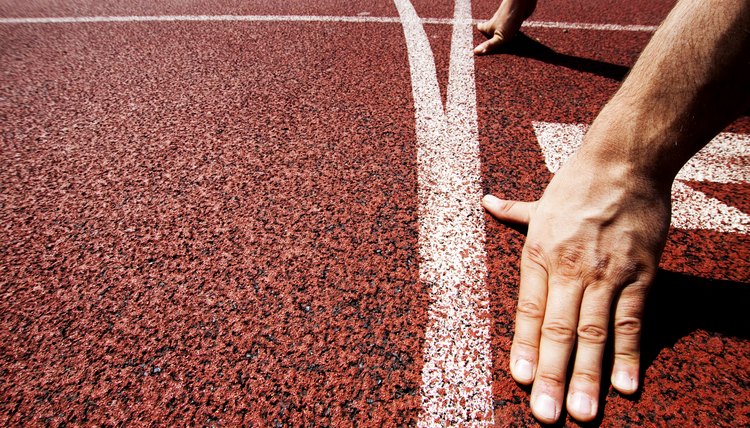What does fact checked mean?
At SportsRec, we strive to deliver objective content that is accurate and up-to-date. Our team periodically reviews articles in order to ensure content quality. The sources cited below consist of evidence from peer-reviewed journals, prominent medical organizations, academic associations, and government data.
The information contained on this site is for informational purposes only, and should not be used as a substitute for the advice of a professional health care provider. Please check with the appropriate physician regarding health questions and concerns. Although we strive to deliver accurate and up-to-date information, no guarantee to that effect is made.
Do Sprinters Work Out Their Upper Bodies?

Elite sprinters gain considerable speed and power by pumping their arms. Strong upper body and core muscles can help the legs do their job. While excess muscular bulk is detrimental to sprinters, weight training and plyometric exercises have become more popular among top performers. Sprinters at major college programs spend a lot of time in the weight room conditioning their whole body.
Arms and the Sprint
Sprinters use powerful arm drives to help propel them out of the blocks and start in the desired low posture. As they reach full speed, their arms and legs work in concert to sustain the proper rhythm. A powerful arm drive can help sprinters maintain their proper stride as fatigue sets in. Lactic acid builds in the arms as it does in the legs, which is why sprinters must condition their arms for racing.
Core Muscles and the Sprinter
Sprinters must build core muscle strength so they can transfer all their upper body power through their legs down to the track. Those muscles also stabilize runners and prevent inefficient side-to-side movement as they fatigue late in the race.
Arm and Shoulder Lifts
If you want your nerves to "fire" quickly during a sprint do the two Olympic lifts which enhance your flexibility, speed and coordination; the clean and jerk and the snatch. Compliment those lifts with static lifts such as the bench press and shoulder press to work your shoulders. To develop your elastic or explosive upper strength, perform drills with a medicine ball.
Core Muscle Work
Crunches, weighted decline board situps, and hanging knee-ups and leg raises to work the abdominal muscles. You can also use seated calf raises and various exercises on the Ab/Ad machine to work your core muscles.
References
Writer Bio
Jeff Gordon has been reporting and writing since 1977. His most recent work has appeared on websites such as eHow, GolfLink, Ask Men, Open Sports, Fox Sports and MSN. He has previously written for publications such as "The Sporting News" and "The Hockey News." He graduated from the University of Missouri-Columbia School of Journalism in 1979 with a bachelor's degree.
